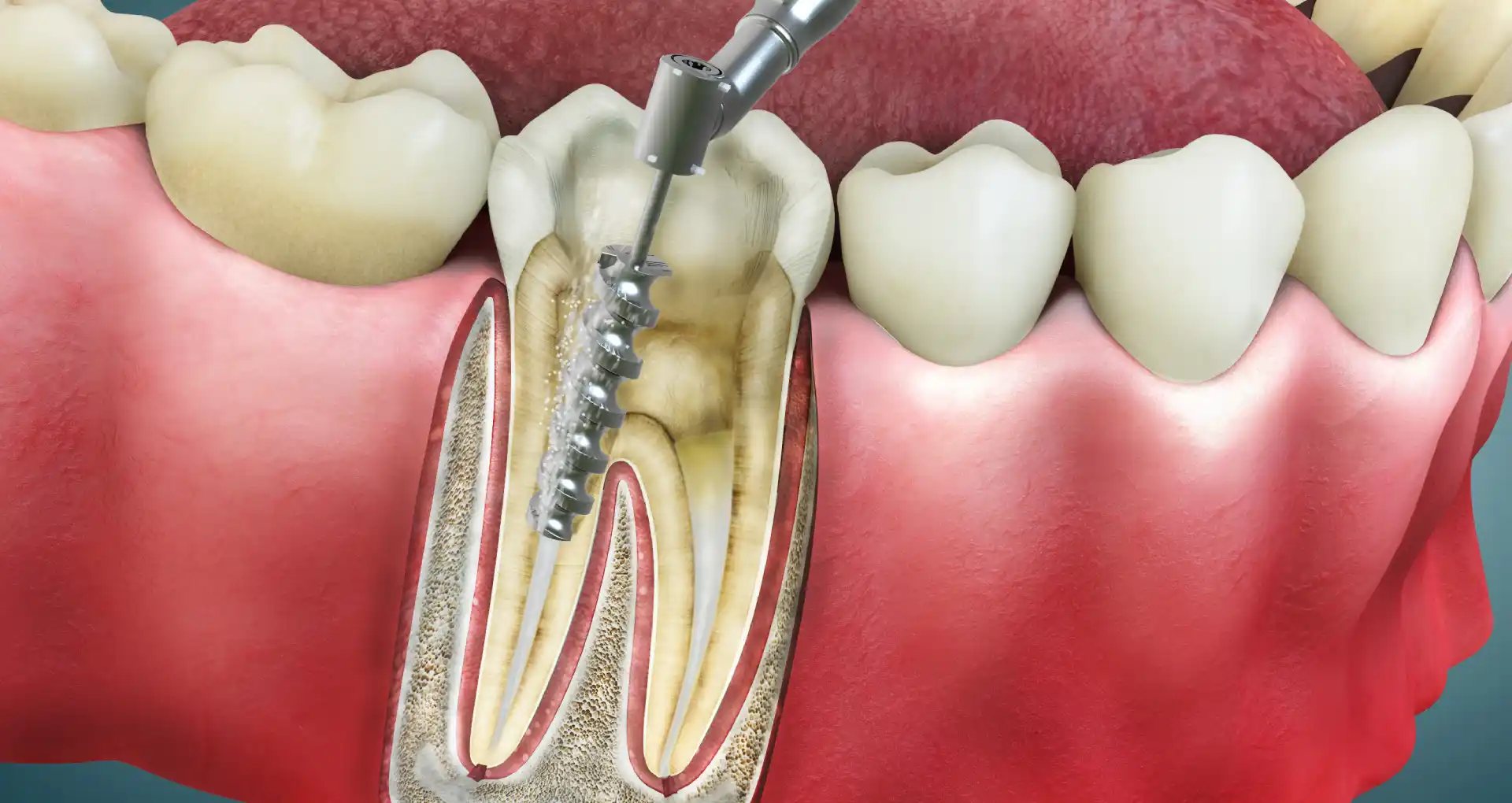Root canal therapy is a cornerstone in dental restorative procedures, offering a lifeline for preventing the infection or decay that could lead to tooth loss. This buyer’s guide, meticulously tailored for the discerning patients of Palmetto Family and Cosmetic Dentistry, delves into the intricacies of root canal treatments, equipping you with the knowledge to navigate your journey toward dental health confidently.
Understanding Root Canal Therapy
Root canal therapy is a dental procedure to treat infection or damage within a tooth’s pulp, a soft area within the center of the tooth that contains nerves, blood vessels, and connective tissue.
Extracting the diseased or damaged pulp is the main step in the process of cleaning and disinfecting the inner chambers of the tooth (the root canals), and filling and sealing these spaces to preserve the tooth’s structure and prevent further infection.
The Necessity of Root Canal Therapy
The need for root canal therapy arises under several circumstances, including:
- Deep Decay: When tooth decay penetrates through the tooth’s outer layers into the pulp.
- Infection or Abscess: When an infection develops inside the tooth or at the root tip.
- Trauma or Injury: When a tooth is cracked, chipped, or receives a blow that affects the pulp.
- Repeated Dental Procedures: It can lead to pulp damage on the same tooth.
Signs You May Need a Root Canal
- Persistent pain
- Sensitivity to hot or cold that lingers
- Tenderness to touch and chewing
- Discoloration of the tooth
- Swelling and tenderness in the nearby gums
- A persistent or recurring pimple on the gums
Types of Root Canal Treatments
Depending on how severe the root canal is, different types of treatments may be necessary for infection and the tooth’s anatomy. However, the fundamental steps remain consistent:
- Diagnosis and X-ray: To determine the extent of the infection.
- Anesthesia: To ensure comfort during the procedure.
- Pulpectomy: Removal of the infected or damaged pulp.
- Cleaning and Shaping: Disinfecting and shaping the canals for filling.
- Filling: Sealing the cleaned and shaped canals with a biocompatible material.
- Restoration: Restoring the tooth with a filling or crown for protection and functionality.
Choosing Palmetto Family and Cosmetic Dentistry for Your Root Canal
Selecting the proper dental practice for your root canal therapy is crucial. Factors to consider include:
- Experience and Expertise: Look for a practice with a proven track record in successfully performing root canal treatments.
- Advanced Technology: State-of-the-art equipment and techniques can enhance the precision and comfort of the procedure.
- Patient Comfort and Care: A practice prioritizes patient comfort and addresses dental anxieties.
- Follow-Up Care: Availability of comprehensive post-treatment care and instructions.
The Root Canal Procedure: What to Expect
- Preparation: The area around the tooth is numbed with local anesthesia. To ensure the tooth remains clean and isolated throughout the process, a dental dam is inserted.
- Accessing the Pulp: An opening is made in the tooth’s crown to access the pulp chamber.
- Removing the Pulp: Damaged or after removing the diseased pulp, the root canals are prepared and sealed.
- Filling the Canals: The canals are filled with a biocompatible material, usually gutta-percha, and sealed.
- Restoring the Tooth: A filling or to restore the shape of the tooth, a crown is placed on top of its appearance, and functionality.
Recovery and Aftercare
- Mild Discomfort: It’s normal to experience mild discomfort or sensitivity immediately following the procedure, which can typically be managed with over-the-counter pain relievers.
- Oral Hygiene: Maintaining good brushing, flossing, and regular dental checkups are essential components of proper oral hygiene for the dentist regularly for the success of the treatment.
- Avoiding Hard Foods: Until the tooth is fully restored with a permanent filling or crown, it’s wise to avoid chewing hard foods on the treated side to prevent damage.
The Benefits of Root Canal Therapy
Root canal therapy, often called a root canal, in order to salvage a damaged infected or damaged tooth. While root canals have gained a reputation for being painful, advancements in technology and techniques have made the procedure much more comfortable and practical. Here are some of the critical benefits of root canal therapy:
- Pain Relief: When a tooth is diseased or damaged, the main reason to get a root canal is so the pain can go away. The tooth’s infected pulp and nerve tissue are extracted to remove the pain-inducing cause.
- Preservation of Natural Tooth: Unlike tooth extraction, which involves removing the entire tooth, using root canal therapy, dentists are able to save the patient’s natural tooth structure. Preserving the tooth is essential for adequately chewing and keeping neighboring teeth from moving.
- Improved Oral Health: Root canal therapy helps to eliminate the infection within the tooth, preventing it from spreading to other teeth or into the surrounding bone. This can help avoid the need for more extensive dental treatments.
- Cosmetic Benefits: After a root canal, the dentist typically places a crown or filling on the tooth to restore its strength and appearance. This has the potential to enhance the aesthetic appeal of the tooth and restore your smile.
- Comfortable Procedure: With modern dentistry and anesthetic methods have made root canal therapy a bearable experience for the majority of patients. In order to numb the area, dentists can apply local anesthesia, and sedation options are available for those who experience dental anxiety.
- Long-Term Success: When performed by a skilled dentist, a root canal can have a high success rate. A root canal treated tooth has a very good chance of lasting a lifetime with the right aftercare.
- Cost-Effective: While root canal therapy may initially seem expensive compared to tooth extraction, it is often more cost-effective in the long run. Tooth extraction requires other procedures, like dental bridges or implants, to substitute the lost tooth, which can be more expensive than saving the natural tooth with a root canal.
- Prevents Jawbone Deterioration: Keeping your natural teeth helps to maintain the jawbone’s strength and density. Tooth extraction can lead to bone loss over time, whereas root canal therapy preserves the natural tooth and its support structure.
Patients might reap many benefits from root canal therapy with infected or damaged teeth, providing pain relief, preserving natural tooth structure, and promoting long-term oral health.
Potential Complications and Solutions
While root canal therapy boasts a high success rate, potential complications can include:
- Persistent Infection: If any infected material is left behind or the antibiotic treatment is impractical, further treatment may be necessary.
- Tooth Fracture: A tooth that has undergone root canal therapy may be more brittle and susceptible to fracture, emphasizing the importance of a crown for protection.
- Re-treatment: In some cases, a root canal may need to be redone due to the complexity of the tooth’s canal anatomy.
Cost and Insurance Coverage
The cost of root canal therapy can vary widely based on the tooth’s location and the complexity of the procedure. Root canal therapy is covered by a large number of dental insurance plans, recognizing it as a necessary restorative procedure.
Palmetto Family and Cosmetic Dentistry offers transparent pricing and works with patients to maximize insurance benefits and explore financing options, ensuring that financial considerations do not hinder essential dental care.
Root canal therapy is vital for preserving teeth that would otherwise be lost to decay or infection. At Palmetto Family and Cosmetic Dentistry, we understand the importance of this treatment.
Ensuring that our patients receive the best care possible is our top priority level of care, leveraging our expertise, state-of-the-art technologies, while prioritizing the needs of patients to guarantee the best possible outcomes.
Armed with the knowledge from this guide, patients can confidently approach root canal therapy, understanding the process, benefits, and care required to maintain their oral health and restore their smiles.

